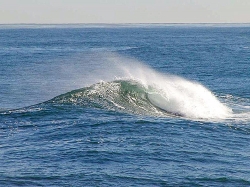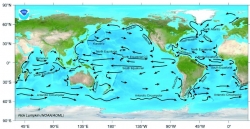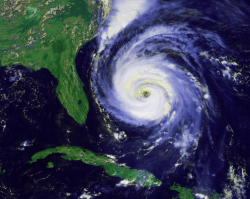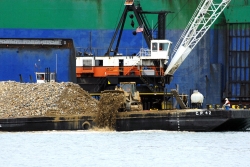Sitting at the beach, you can watch swimmers bob up and down in the water. You can see surfers being swept toward the shore. Oceans have the power to move things like people, boats, and even rocks and sand. The ocean is so powerful it can move and change the shape of the beach. Then sometimes people and machines have to put it back.
Ocean water is different from water in your bathtub or a swimming pool in more ways than one. The ocean's water does not stand still. Instead, it's always moving around the world. At the beach, you can look out at the water and see the water move up and down. Winds far out at sea start to push at the top of the water. The energy from the wind pushes on the water and builds it up. Over time, with a lot of pushing, they grow into the waves we see.
Waves are made of water that the wind has pushed along the surface from a ripple to a large swell. Waves bring a lot of energy when they run into rocks and sand, carrying them out to sea or moving them down the beach.

Hey, where's my surfboard?
Jon Sullivan, Public domain, via Wikimedia Commons
At the beach or at your house, water is always on the move. After it rains, water rushes down your driveway to the curb and into the storm drain. Rivers flow from mountains to the sea. On land, gravity helps water move. This moving water can carry rocks and dirt a long way. Wind, heating and cooling and other things make ocean water move.
Ocean currents are what we call the movements of the water in the ocean. These different currents are different than the waves and can take sand out to sea or move the sand further down the shore.

Which way did he go?
NOAA, Public domain, via Wikimedia Commons
Sometimes the beach changes almost over night. Big, powerful storms can start over warm ocean waters near the Earth's middle. They grow in size and might until they are swirling storms with heavy rain and high winds. When these storms hit the shore, they bring flooding and powerful waves, which can knock down buildings and pull sand, dirt, and even pieces of buildings out to sea.
Hurricanes are storms in the shape of a circle with bands of strong rains, thunderstorms, and winds that blow faster than your car drives on the highway.

Hurricane Fran coming right at you.
NOAA / National Climatic Data Center, Public domain, via Wikimedia Commons
With all this sand and rock moving out to sea and down the shore, you may wake up and wonder where the beach went. It may have moved somewhere it's not wanted. All that sand the waves pulled into the water settled on the bottom of the ocean. If it builds up near a harbor where boats pass through, the water may become too shallow for the boats. Ships might have a hard time getting where they need to go. Sometimes people, with the help of machines, have to move sand and dirt back where they started.
Dredging is the process of removing sand, dirt and rock to keep a waterway clear. Sometime the sand is dug up and put right back on the beach.

Did someone say they needed some gravel?
U.S. Navy photo by Vance Vasquez, Public domain, via Wikimedia Commons
Ocean waters always move around the world in patterns called currents. You can see water moving when you see a wave. These waves have the power to change the shape of the beach. Moving ocean waters can carry rock, sand, and even buildings out to sea and down the beach. This may happen over a long time or overnight when a big storm like a hurricane hits. Dredging is one way people try to put things back where they started so you can swim, surf and have fun at the beach.
References:
Bauer, Chris. "Science of Big Waves" Quest. KQED.org,
2007. <http://science.kqed.org/quest/video/science-of-big-waves/>
"Currents." Education. NOAA National Weather
Service: Office of Climate, Water, and Weather Services, 2010. <http://oceanservice.noaa.gov/education/tutorial_currents/06measure4.html>
"Ocean Circulation and Currents."
World of Earth Science.
2003. Encyclopedia.com. http://www.encyclopedia.com/doc/1G2-3437800424.html
"Storm Surge Overview." NOAA's National Hurricane
Center. National Weather Service, 2013. <http://www.nhc.noaa.gov/surge/>
"Seawalls and Beach Erosion." World of Earth Science. Encyclopedia.com, 2003. http://www.encyclopedia.com/doc/1G2-3437800541.html
"Earth
Science for Kids: Weather - Hurricanes (Tropical Cyclones)."
Ducksters. Technological Solutions, Inc. (TSI), July 2014.
<http://www.ducksters.com/science/earth_science/hurricanes.php>
"Weather Station - Hurricane 101" Hurricanes.
Miami Science Museum, 2013.
<http://www.miamisci.org/hurricane/hurricane.html>